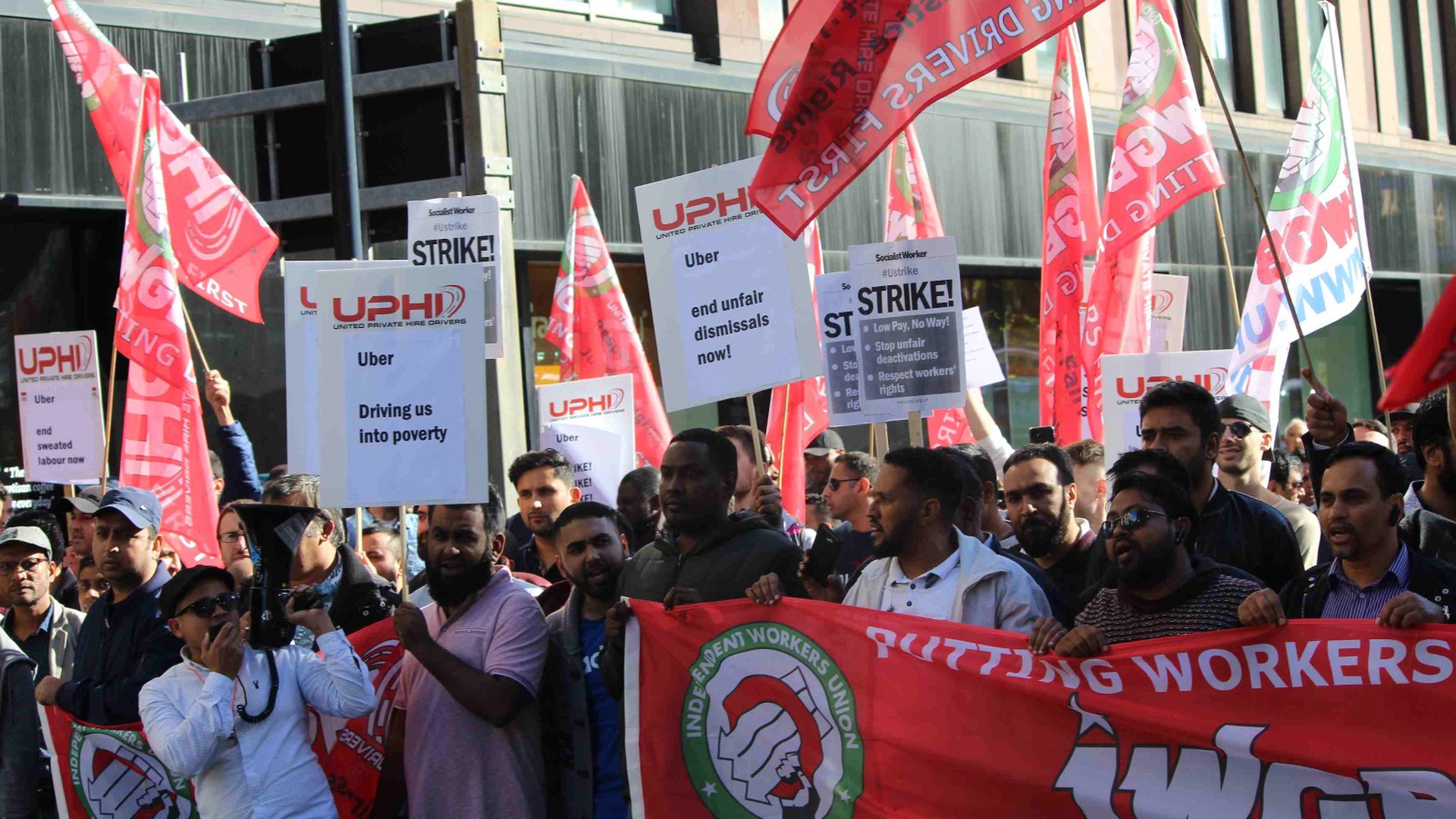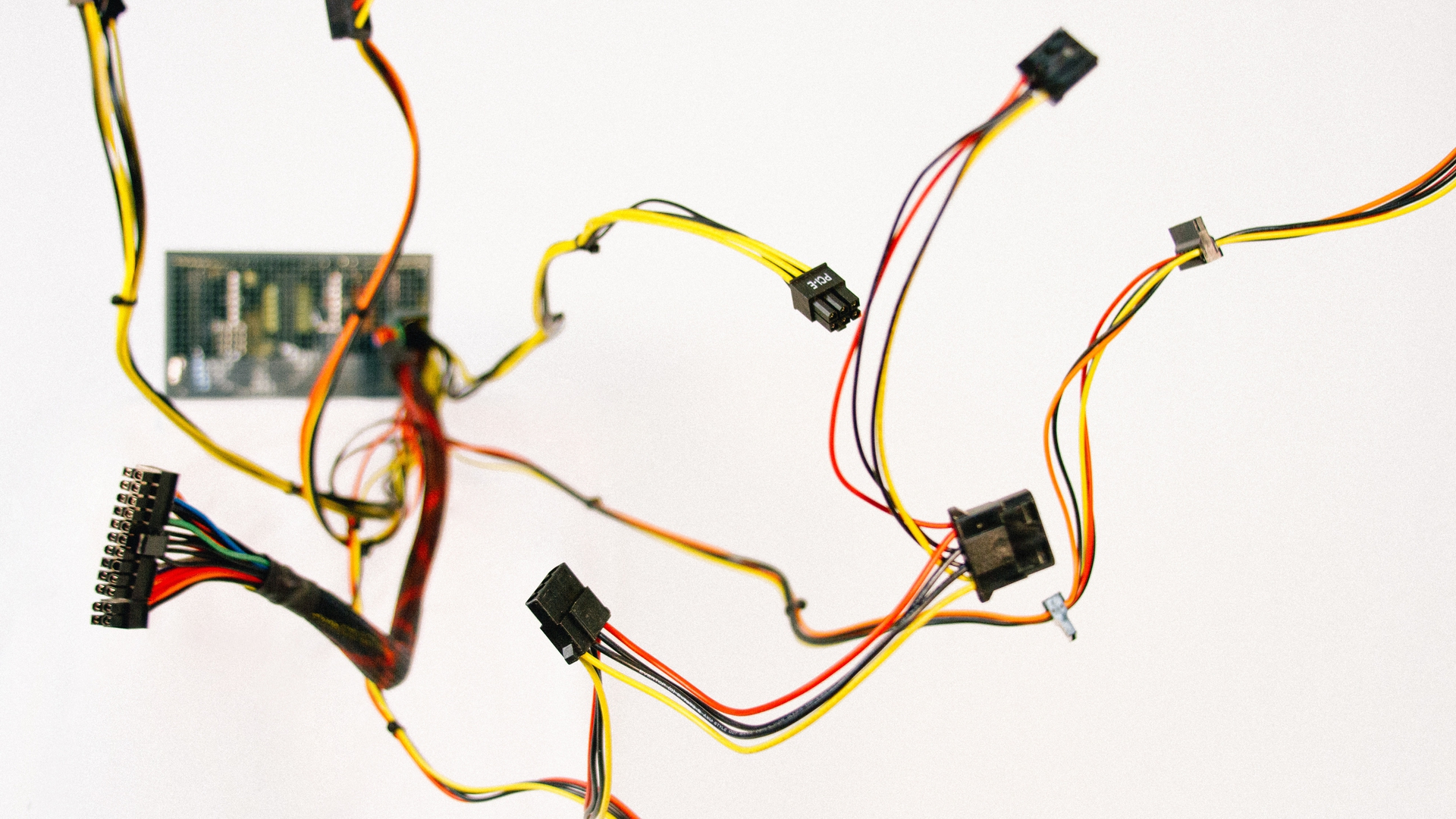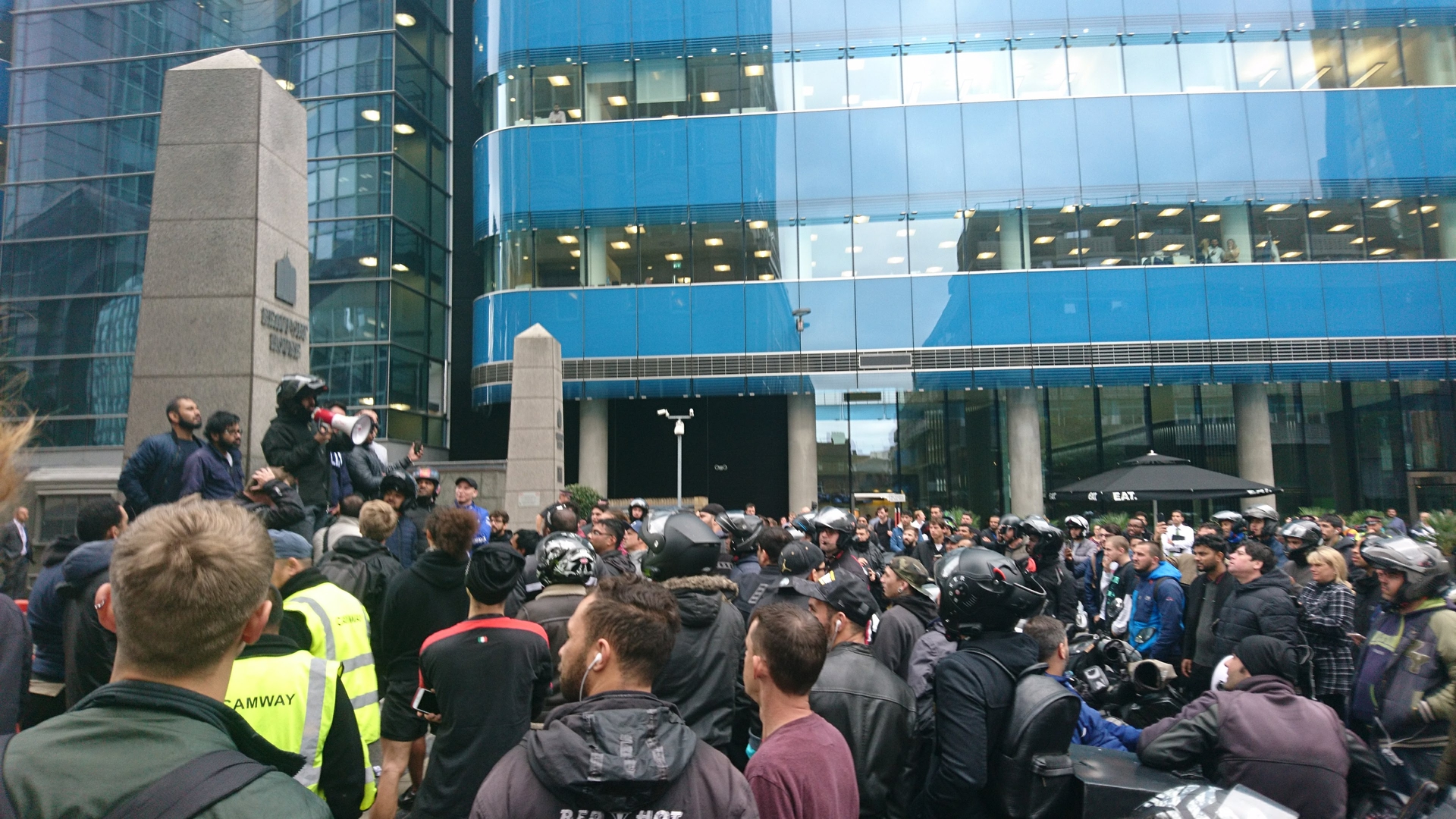'Uber, Uber you can’t hide! We can see your dirty side!' A report from the Uber strike 9th October
by
Ben Tippet (@BenTippet),
Lydia (@lydiakathleenh)
October 11, 2018
Featured in A Month of Revolt in the Service Sector (#4)
United Private Hire Drivers called Uber drivers on strike in London, Birmingham and Nottingham on the 9th of October

inquiry
'Uber, Uber you can’t hide! We can see your dirty side!' A report from the Uber strike 9th October
United Private Hire Drivers called Uber drivers on strike in London, Birmingham and Nottingham on the 9th of October
You don’t often see Uber drivers at the Uber HQ office in the heart of London’s financial district. But on Thursday, hundreds of drivers descended on Aldgate, replacing their Priuses with placards. With short notice, United Private Hire Drivers (UPHD), a branch of IWGB, called a 24 hour Uber driver strike in London, Nottingham and Birmingham.
This however is not just the latest in string of gig economy strikes, it’s a first. The strike was not a defensive response to a dispassionate and egregious act from Uber. It was active. Uber drivers struck in their hundreds to demand:
-
increased fares to £2 per mile
-
reduce commissions to 15%
-
end to unfair deactivations and bullying
-
workers’ rights
The strike started off with chants outside the offices, playing vuvuzelas and banging drums. After a failed attempt to enter the building, the demonstration quickly picked up pace. The energy was in part a response to the overwhelming police presence, who had organised themselves into a wall in front of Uber’s office doors. Whilst the police mostly left UberEats food delivery riders alone in their two recent demonstrations (20th September and 4th October), they policed Uber drivers hard. Whether this is because protestors weren’t on mopeds or because of the different demographic, the difference was noticeable. What was blatant was the priority of the police to protect the Uber office and executives. “We pay your wage, Uber doesn’t even pay tax”, was one response from a striker.
Yet, it was more than the police which energised the strike. There were hundreds of strikers, and everyone was chanting or drumming. As the numbers of strikers rapidly rose so did the energy of the demonstration. This was a first for the strikers and you could feel the confidence of the strikers rise.
After the police formed their lines, the strikers turned their backs on the Uber HQ and headed to the streets, blocking the main artery of East London. The demonstration quickly swelled into the roads surrounding Aldgate East station, and marching behind an IWGB banner, it circled the headquarters. Strikers came into contact with Uber drivers who had broken the strike. Emboldened by the power of the strike, they challenged scabs. A police officer in his efforts to protect a scab from being challenged, pushed strikers out of the way of the car but instead created a commotion in which one strikers leg was driven over. As we passed Sainsburys, the security guards rushed inside and closed the shutters, locking people in the shop.
The #UStrike is the most daring action taken by UPHD yet and by the look of the strike they are just getting started. With the emergence of highly mobilised and increasingly organised UberEats riders and Uber drivers the potential for collaboration and a nationwide Uber shutdown is looming.
Join us on their next demonstration on the 30th of October
Featured in A Month of Revolt in the Service Sector (#4)
Subscribe to Notes from Below
Subscribe now to Notes from Below, and get our print issues sent to your front door three times a year. For every subscriber, we’re also able to print a load of free copies to hand out in workplaces, neighbourhoods, prisons and picket lines. Can you subscribe now and support us in spreading Marxist ideas in the workplace?
Read next

Technology and The Worker
by
Wendy Liu,
Marijam Didžgalvytė
/
March 30, 2018

